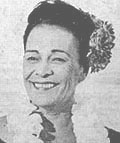ʻIke aku i ka nani
Ka home aʻo Laimana
Home kau i ka nuʻu
Home piha hauʻoli
Home piha hauʻoli
Nanea me nā hoaloha
Ma ka lihi kai aʻo Kona
No Kona ke kai malino
No Hualālai kou makua
No Hualālai kou makua
He kohu kula kaimana
ʻAlohi nei i ka lā
Ua `ohu `oe a kūpaʻa
Nā keiki aloha ʻo ka ʻāina
Nā keiki aloha ʻo ka ʻāina
E ō mai kou inoa
Ka home aʻo Laimana
Home kau i ka nuʻu
Home piha hauʻoli
Home piha hauʻoli
-

Lei Collins
Of the Lyman home
Home placed up high
Home filled with happiness
Home filled with happiness
Friends relax and
View of the sea of Kona
Kona of the calm sea
And the guardian, Hualalai
And the guardian, Hualalai
Like a precious diamond
That glitters in the sun
You are faithful
The children of the land
The children of the land
Answer. when I call your name
Home of the Lymans
Home placed up high
Home filled with happiness
Home filled with happiness
Source: Baker Collection & Marnie Weeks- This song was composed in honor
of the Lyman Estate in Kona. Sarah Joiner and Rev. David Belden Lyman left
New Bedford, Massachusetts, Nov. 26, 1831,
with the 5th company of missionaries on board the whaling
ship, Averick. They arrived in Honolulu May 17, 1832, a
voyage of 173 days, and stayed in Honolulu 2 months, learning
Hawaiian language and customs, before transferring to the
Hilo Mission. Overwhelmed by the beauty and lushness of
Hilo, the young couple soon realized they did not bring
enough warm clothes or shoes. Unfortunately, they did bring
their New England predjudices and were appalled at the
native lifestyle, the smoking, drinking and sexual mores.
Intent on saving these wretched souls, they studied the
Hawaiian language diligently. The early missionaries
established the written Hawaiian language with seventeen
recognizable sounds/letters, later reduced to 12. This reduction was
probably made to accomodate the limited printing press. Letters and sounds
probably incorporated or dropped were: B with P, R with L, S/Sh/cha
dropped, T (retained in the Niʻihau dialect) and G with K, V with W
or sometimes dropped. Hilo had 30 schools, while the outlying schools
were staffed by native teachers, some as young as 14 years old, sent out
to teach as soon as they were pronounced proficient. By 1832, more than half
of the adult population was literate, due in part to the teaching skills
and dedication of the missionaries and a law requiring the native population
to attend school. This was truly an amazing feat since there was no written
language in 1820. The Lymans moved to Kona in 1835. Their new home had a walled
enclosure to isolate their children from native playmates and heathen ways.
Over the years, their attitudes softened, they called Hawaiʻi home and referred
to the mainland as the Fatherland. Sarah and David Lyman became naturalized
citizens
of Hawaiʻi, June 10, 1851, and opposed annexation of the islands to America.
One of their sons married into Hawaiian royalty and a grandson was the first
part-Hawaiian to attend West Point. In 1956, Barbara and Howard Lyman built their home at Holualoa Bay, a historic area between Kailua-Kona and Keauhou Bay in the Kona District of Hawaiʻi Island. Lei Collins, then curator of Huliheʻe Palace, was a long-time friend and frequent visitor to the home. She composed this now classic mele for that place she called a "home full of happiness," describing its beauty overlooking the gentle sea, in the shelter of Hualālai mountain.